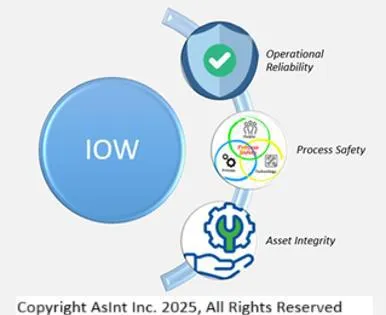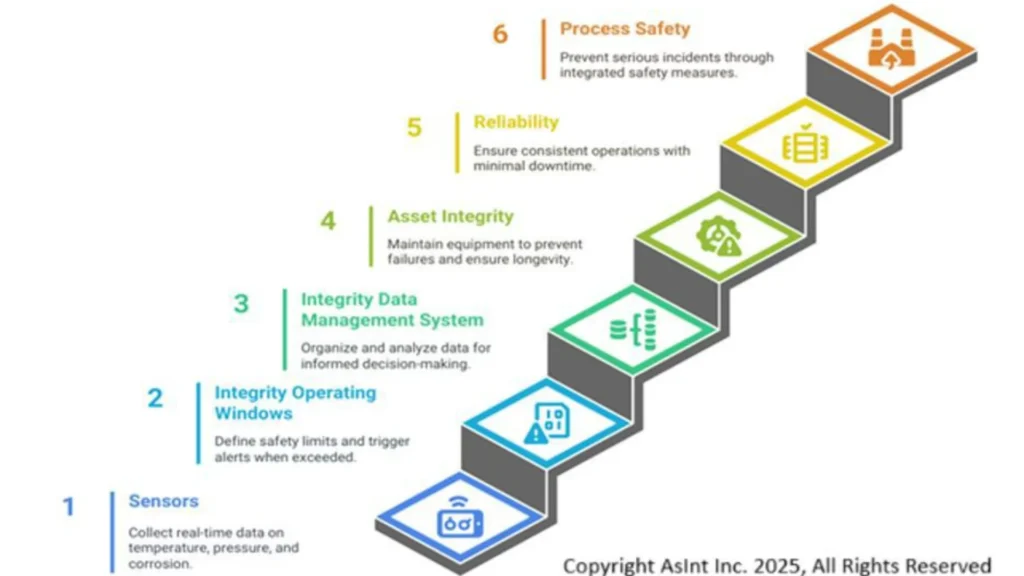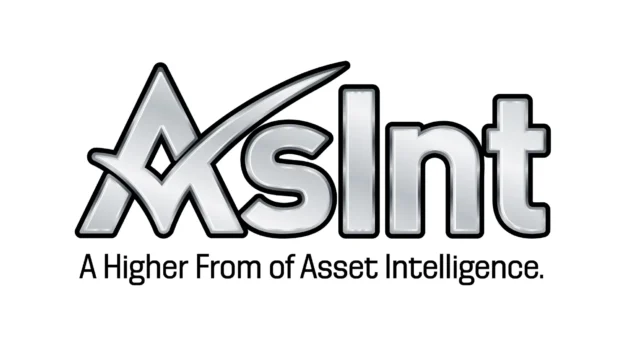Authors: Authors: Rohan Patel, Ajay Krishna & Jeeniya Agrawal
Operations or maintenance personnel are surrounded by numbers every day. Temperatures, pressures, flow rates… the list goes on. Monitoring them is part of the job. But keeping all of them within their normal range? That’s the real challenge. These numbers are not just data points—they are indicators that tell us how our plant is doing. When everything is running within limits, we feel confident that the plant is healthy. But if something starts to move outside those limits, that’s our early warning sign that something could go wrong.
That’s precisely what Integrated Operating Windows (IOWs) are all about.
What Are IOWs?
IOWs are defined limits for key process parameters, such as temperature, pressure, pH, and flow rate, that, if exceeded, could lead to material degradation, corrosion, equipment failure, or loss of containment (LOC).
These are not regular process limits for product quality or performance—they are the limits designed to protect the asset integrity.
Think of IOWs as the “safe zone” for equipment. Staying inside this zone to keeps the plant healthy.
Why Do IOWs Matter So Much?
- Proactive Asset Integrity Management: IOWs allow operators and asset managers to act before damage occurs. If a parameter exceeds its window, immediate corrective action can prevent long-term deterioration.
- Protection Against Corrosion and Degradation: Certain materials degrade more rapidly when exposed to off-spec conditions (e.g., high temperatures that accelerate creep or oxidation). IOWs are often linked to these damage mechanisms and serve as a control layer against them.
- Compliance and Risk Mitigation: Regulatory bodies are increasingly emphasizing IOWs in mechanical integrity programs. Documented IOWs and responses to excursions demonstrate that a facility is managing risks responsibly.
- Operational Excellence: IOWs help in bridging the gap between operations and asset integrity teams. They ensure that operations do not unknowingly compromise long-term asset health in pursuit of short-term gains.

How to Establish IOWs?
Establishing IOWs is not about guessing numbers or blindly copying design values. It is a structured and risk-informed process, combining knowledge, operational experiences, and lessons learnt from the past.
1. Identify Damage Mechanisms
The first step is understanding how the equipment can potentially fail. This could be due to corrosion, erosion, creep, fatigue, fouling, or a combination of mechanisms. This understanding usually comes from historical failure data, inspection findings, and knowledge of the materials and process environment.
2. Define the Sweet Operating Zone
Once the damage mechanisms are precise, the next step is to define the safe operating range, often referred to as the sweet zone. This is the zone where equipment performs efficiently without degradation. It is based on the original design intent, material capabilities, and how the equipment behaves in those operating conditions.
3. Set Certain Limits
Now that the healthy operating range is clear, we need to define the operating limits. The standard limit is the normal range where things are expected to stay. If parameters move slightly beyond this, it doesn’t cause immediate harm but signals the need for attention. On the other hand, the critical limit is the point beyond which the equipment will be damaged, have safety risks or environmental impacts, and exceeding it demands urgent corrective actions.
4. Establish Rules and Alerts
With the limits in place, the next step is to bring them into the control systems. This involves setting up alerts and alarms in systems like the DCS or online monitoring tools. When a parameter exceeds a defined limit, the system generates an alert that is automatically sent to the relevant personnel through dashboards, emails, or mobile notifications.
5. Documentation and Ownership
Ultimately, none of this is effective without clear responsibility and thorough documentation. It should be clearly defined who is responsible for monitoring IOWs, who responds to alerts, and how deviations are recorded and reviewed. These IOWs should also be integrated into the asset integrity framework, operating procedures, and training programs so that everyone involved knows their role.
IOW Integration with Asset Integrity
- Real-time Visibility: Helps in continuously tracking critical parameters, such as temperature, pressure, and flow, which enables understanding whether the equipment is running safely or has the potential to deviate from the standard zone, potentially leading to failure.
- Early Warning Signs: Deviations in IOW parameters indicate issues like corrosion or overheating well before it becomes visible or dangerous. This gives teams a valuable response time over process safety time.
- Smarter Maintenance and Inspection Decisions: Instead of relying only on time-based intervals, inspections and repairs can be prioritized based on risk. This means resources would be optimized, which improves both safety and efficiency of the plant.
- Risk-Based Asset Care: Trends in IOW breaches can guide what needs to be checked or replaced during outages, reducing downtime and avoiding surprises.
- Strengthen Safety and Regulatory Compliance: Operating within a defined range demonstrates to auditors and regulators that the plant is running within design-safe limits and following the recognized best practices.
- Shift from Reactive to Proactive Maintenance: Instead of waiting for equipment to fail, IOWs help plant personnel to prevent problems by identifying the risks at early stages and acting on them before damage happens.
Evolution of IOWs
Earlier operators relied on experience and routine checks to determine if something was wrong. There were no set rules, just intuition, experience, and hands-on familiarity with the plant.
As time passed, the need for more structured control was realized. API 584 helped strengthen the concept of IOWs by directly linking process conditions to asset degradation risks. This increases consistency and clarity, with defined standards and critical limits.
Next is digital integration. With DCS systems, IOWs could now trigger alarms and track deviations automatically. Operators no longer need to catch everything manually it has become part of the system. Automatic Emergency shutdowns can also be installed on some of the key IOWs.
Today, IOWs are smarter than ever. Due to IoT sensors, cloud platforms, and predictive analytics, we now monitor assets in real-time, analyse the trends, and even predict future risks. IOWs have gone from simple guidelines to powerful tools for proactive integrity management.
How Sensors, Data, and Smart Decisions Keep Industrial Sites Safe
Imagine running an industrial facility—pipes, tanks, machines, all working under high pressure and extreme temperatures. To keep everything running smoothly, an entire system quietly works in the background, connecting small sensors to big-picture decisions. Here’s how it all comes together and works.
It starts with sensors. These are the eyes and ears of the plant. They constantly track things like temperature, pressure, flow and how fast metal is corroding inside pipes. Every second, they are collecting and showing data.
But raw data on its own is not enough. That’s where IOWs come into play. These are the safety limits. For example, if a pipe is only safe up to 500°C, that is part of the IOW. If something crosses that limit, it triggers an alert.
Now, all alerts and sensor readings need to be organized, understood and acted on. Enter the Integrity Data Management System (IDMS). It pulls everything together so engineers can see what’s happening, identify the potential risks, and make better, smarter decisions.
From this, the next is Asset Integrity. This is all about ensuring that equipment remains safe and functional for as long as possible. It is not just about fixing what’s damaged; it’s about preventing or mitigating failure before it happens.
And when equipment is well-maintained, reliability improves, resulting in fewer breakdowns, less downtime, and more predictable operations, which is beneficial for business, safety, and everyone. At the heart of it all is Process Safety, the goal. Preventing serious incidents like fires, explosions or toxic releases. And that only works when sensors, data, systems, and people are all connected and working together.

Conclusion
IOWs have become the core part of how we keep plants safe and reliable. What started as just operator experience and gut feeling has evolved into a smart, structured system that helps teams identify risks before they become real problems. Instead of just reacting when things go wrong, IOWs give operators the chance to act early, which helps save time and money and keeps people and equipment safe. Today’s technology, like sensors, automation, and real-time alerts, makes IOWs more potent than ever. They connect operations, maintenance, and integrity teams around a common goal: operating within safe limits and maintaining the integrity of plants. As the industry continues to prioritize safety, sustainability, and cost optimization, IOWs will remain a vital tool, helping plants not only meet compliance but also extend equipment life, reduce unplanned downtime, and protect both people and assets for the long term.

